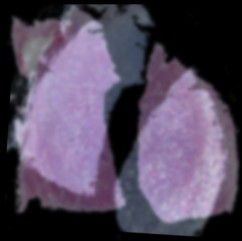Image registration is the task of finding a transformation that best aligns two given images. A typical problem could be that we have two images of a patient taken at different points in time, and the patient has moved in between.
This page demonstrates the use of rigid image registration, where one assumes that the images only have to be translated and rotated in order to align them.
Drag with the mouse or finger to move the template image. Rotate using two fingers. The algorithm will automatically try to restore the alignment.
Simple algorithms such as this one have difficulties with complicated objects: they fill only find a local minimum, which is only partially optimal, and from which the algorithm cannot escape.
Authors: Lars Koenig, Jan Lellmann


